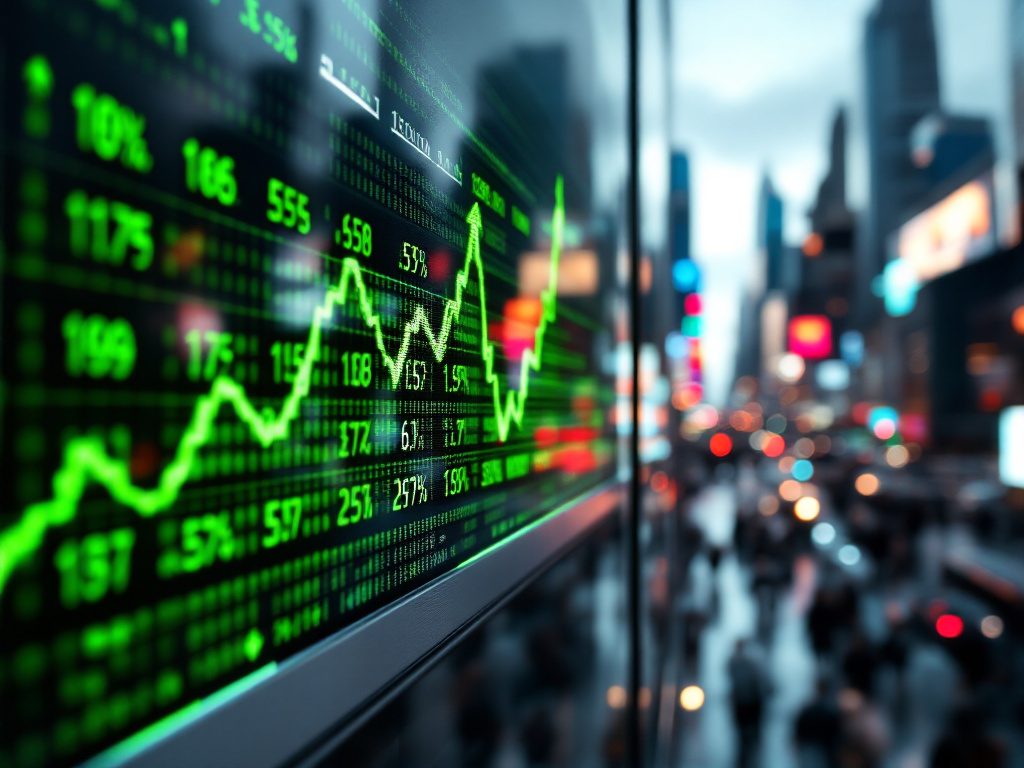A Rally Surfaces Amid Economic Uncertainty
On a brisk Tuesday morning, Wall Street’s mood suddenly brightened. The Dow Jones Industrial Average vaulted more than 300 points, buoyed by hints of imminent trade deal progress and soft economic data that stoked expectations for a Federal Reserve rate cut. Investors—habituated to months of policy brinksmanship and market whiplash—momentarily exhaled, eyeing the 40,500 mark on the Dow as if it were a harbinger of easier days ahead.
Trade officials, including Commerce Secretary Howard Lutnick, suggested a historic agreement with an unnamed international partner was “done,” pending foreign approval. This, combined with fresh corporate earnings like Honeywell’s surprise upside, propelled the market to its sixth consecutive day of gains—the longest streak since last summer for the Dow, and since November for the S&P 500, according to FactSet.
Yet beneath the bright headlines, concern lingered. Softness in the U.S. labor market emerged in the March JOLTS report; job openings had sunk to 7.192 million, their lowest level since September. The mood among consumers wasn’t much better: The Conference Board’s consumer confidence index dropped to 86.0 in April, its lowest in nearly five years. As Harvard economist Elise Gould notes, “When consumers and employers both pull back, it’s a clear warning sign for the road ahead.”
Rate Cuts, Market Streaks, and Political Shadows
Hope for lower borrowing costs reigned on trading floors as Treasury yields fell, signaling investors’ bets that the Federal Reserve may cut rates as soon as June. On paper, a rally seems encouraging, but a closer look reveals worrisome undercurrents. The market’s recent volatility has unfolded against an alarming backdrop: President Trump’s first 100 days in office delivered the worst market start for any presidency since Nixon in 1973. Despite this week’s gains, the Dow and S&P 500 are still down 6.8% and 7.3%, respectively, from Inauguration Day levels.
How does a market spike coexist with such gloom? Wall Street’s optimism is notoriously fickle, hinged as much on “what if” as “what is.” The latest upturn came after the White House signed an executive order holding back overlapping auto tariffs, allaying some fears among automakers battered by Trump’s erratic trade measures. General Motors and other industry giants, facing relentless uncertainty, have been forced to revise guidance for 2024—a testament to how political volatility bleeds into the real economy.
“The Dow’s six-day win streak is little comfort when consumer confidence is plumbing five-year lows and labor demand is falling off a cliff. A sugar rush from a one-day rally doesn’t reverse the underlying damage policy chaos can inflict.”
About one-third of S&P 500-listed firms are set to report earnings this week—a crucial barometer for market resilience. Even Amazon felt compelled to clarify its trade surcharge plans as headlines and tariffs ping-pong back and forth.
Beneath the Rally: Consequences of Conservative Policy
Beyond that, the current state of the markets should prompt soul-searching about the wisdom of conservative economic policy. President Trump’s tariff-driven brinkmanship continues to cast a shadow over main street workers and middle-class consumers, both of whom are squeezed in ways not reflected in a single day’s surge. The notion that protectionism will “restore American greatness” is as false now as it was in the 1930s, when competitive tariffs deepened the Great Depression—a point often raised by Yale economic historian Adam Tooze.
The headlines may praise a 300-point surge, but let’s not forget who’s been left behind. Every dip in consumer confidence, every decline in job openings, signals families choosing between medications and groceries, workers worrying if their manufacturing job will survive the next round of tariffs, and retailers bracing for unpredictable costs. Pew Research data from early 2024 reveals that more than half of American households feel worse off financially than a year ago, the highest such share since the Great Recession.
Why does this matter to you, the everyday American watching numbers flash across CNBC but feeling no richer? Because policies that prioritize short-term stock market victories—while neglecting wage growth, health security, or affordable education—only widen the gulf between Wall Street and Average Joe. Progressive values demand more. We must invest in education and infrastructure, repair the social safety net, and build a greener, more inclusive economy—solutions that offer security for families, not just dividends for shareholders.

